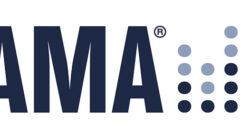Artist and Instrument Craftsman William Close Turns to Antelope to Capture Unique and Unprecedented Recording, Using Natural Valley as the Instrument’s Resonating Chamber
Santa Monica, CA, November 20, 2013
– Ever since his art school days in the late 1990’s while attending the prestigious Chicago Art Institute, William Close pursued his dream of building and performing with unique, handmade instruments whose sounds have never been heard anywhere in the world. Now, The Earth Harp, his masterpiece instrument creation of unprecedented physical scale and sonic beauty, has been captured in astonishing fidelity in a brand new recording — thanks to the digital clocking and conversion technology of
.
His new album with The Earth Harp Collective, Behind the Veil, captures the authentic sound of this spectacular instrument — from its lavish root notes to its rich harmonics and heavenly overtones. Close attributes the success of the recording in large part to Antelope Audio’s new Rubicon A to D converter, which was used as the primary mastering device, and its Orion32 multi-channel interface, which was used during playback. “I’ve never heard The Earth Harp sounding so good on a recording,” he says. “The instrument has so many beautiful harmonics and overtones, and many times these are lost in the process. The Antelope equipment was awesome and helped us finally achieve a true representation of how The Earth Harp actually sounds.”
Marcel James, mastering engineer and Director of Sales and Marketing for Antelope Audio (USA), mastered the project. Interestingly, he was not familiar with The Earth Harp when he first heard the final mixes. When he stumbled on a video of Close’s performance on America’s Got Talent, he got chills: “When I saw his video on America’s Got Talent, suddenly it all made sense,” he recalls. “From that point on, the project took on a new meaning. Here was a relatively new artist, a new instrument and a special new piece of equipment from Antelope that had an A to D converter and a built-in atomic clock.”
While James used Antelope gear throughout the entire process, the starting point was the Orion32, which was clocked to a 10M. Despite using only two channels for playback, he considers the Orion32 a very capable playback converter for mastering: “The sound of the Orion is very neutral, but also very musical,” he says. “I use very high end EQs during the mastering process, and if you start EQing with an inferior sounding device, all you are doing is adding problems.”
After playback, James routed the signal to his Sontec mastering EQs for dynamics processing before sending it via USB to an Antelope Audio Rubicon, which was running Logic X off of a second MacBook Pro as the ‘final recording device.’ “I had just gotten the Antelope Rubicon, so I thought I would try its A to D capability on this project,” he recalls. “The sound of The Earth Harp suddenly had this larger than life sound that really lent itself well to the material.”
For monitoring, his D to A conversion was handled by an Antelope Zodiac +, which was also being clocked to the 10M. “I had the best clocking feeding the most neutral, transparent D to A converter,” he says. For loudspeakers, he used ATC 150 monitors in conjunction with an ATC sub. Finally, he used an Antelope Eclipse 384 as a monitor control. “The Eclipse384 is extremely viable as a monitor management tool,” he explains. “First, it has a very high quality headphone output as well as a sub management system built-in. Second, its preset capability allows instantly recall the original mix, the ‘post-analog’ stage where I introduce the EQ, and after the Zodiac + — the very end of the chain. It gives me a very clear picture.”
In the final mastering phase, James printed audio files for the CD at 44.1, but also made 96 kHz, 24-bit masters, which he wants to help Close make commercially available. Given the unique audiophile nature of the recording, he also ran a pass of 96/24 audio with no limiting and had vinyl records cut on a mastering lathe.
About Antelope Audio
Antelope Audio is the brainchild of Igor Levin who has more than 20 years’ experience and a number of innovations in digital audio and synchronization technology. The company is widely acknowledged as the leading manufacturer of audio master clocks.
In 2009 Antelope Audio launched its product line of high-resolution USB D/A converters, being among the pioneers designing a 384 kHz DAC. Antelope’s DACs employ their renowned 64-bit clocking and jitter management technologies and custom-designed circuits, achieving unprecedented precision and sound clarity.
Photo captions:
1. William Close speaks to Marcel James, mastering engineer and director of sales and marketing at Antelope Audio, in the latest “Hanging Out” series featuring The Earth Harp.
2. William Close performs on The Earth Harp on America’s Got Talent, fall of 2012.










